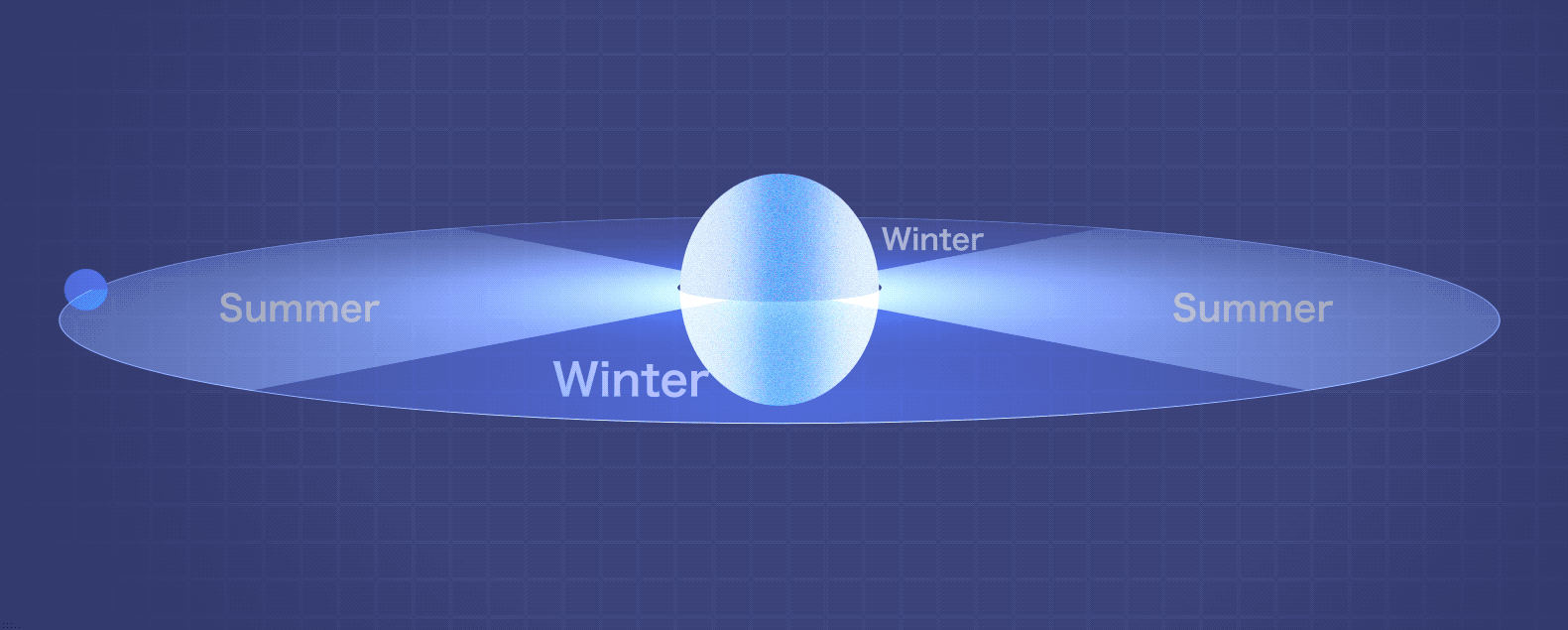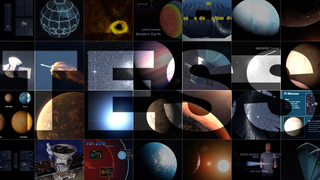Universe
ID: 13635
Measurements from NASA’s Transiting Exoplanet Survey Satellite (TESS) have enabled astronomers to greatly improve their understanding of the bizarre environment of KELT-9 b, one of the hottest planets known.
Located about 670 light-years away in the constellation Cygnus, KELT-9 b was discovered in 2017 because the planet passed in front of its star for a part of each orbit, an event called a transit. Transits regularly dim the star’s light by a small but detectable amount.
Between July 18 and Sept. 11, 2019, as part of the mission's yearlong campaign to observe the northern sky, TESS observed 27 transits of KELT-9 b, and these observations allowed the team to model the system’s unusual star and its impact on the planet.
KELT-9 b is a gas giant world about 1.8 times bigger than Jupiter, with 2.9 times its mass. Tidal forces have locked its rotation so the same side always faces its star. The planet swings around its star in just 36 hours on an orbit that carries it almost directly above both of the star's poles.
The close orbit means the planet's dayside temperature is around 7,800 degrees Fahrenheit (4,300 C), hotter than the surfaces of some stars. This intense heating also causes the planet’s atmosphere to stream away into space.
Its odd host star is about twice the size of the Sun and averages about 56 percent hotter. But it spins 38 times faster than the Sun, completing a full rotation in just 16 hours. Its rapid spin distorts the star’s shape, flattening it at the poles and widening its midsection. This causes the star’s poles to heat up and brighten while its equatorial region cools and dims, a phenomenon called gravity darkening. The result is a temperature difference across the star’s surface of almost 1,500 F (800 C).
With each orbit, KELT-9 b twice experiences the full range of stellar temperatures, producing what amounts to a peculiar seasonal sequence. The planet experiences “summer” when it swings over each hot pole and “winter” when it passes over the star’s cooler midsection. So KELT-9 b experiences two summers and two winters every year, with each season about nine hours.
KELT-9 b begins its transit near the star's bright poles and then blocks less and less light as it travels over the star's dimmer equator. This asymmetry provides clues to the temperature and brightness changes across the star’s surface, and they permitted the team to reconstruct the star’s out-of-round shape, how it’s oriented in space, its range of surface temperatures, and other factors impacting the planet.

NASA’s TESS Provides New Insights Into an Ultrahot World
Located about 670 light-years away in the constellation Cygnus, KELT-9 b was discovered in 2017 because the planet passed in front of its star for a part of each orbit, an event called a transit. Transits regularly dim the star’s light by a small but detectable amount.
Between July 18 and Sept. 11, 2019, as part of the mission's yearlong campaign to observe the northern sky, TESS observed 27 transits of KELT-9 b, and these observations allowed the team to model the system’s unusual star and its impact on the planet.
KELT-9 b is a gas giant world about 1.8 times bigger than Jupiter, with 2.9 times its mass. Tidal forces have locked its rotation so the same side always faces its star. The planet swings around its star in just 36 hours on an orbit that carries it almost directly above both of the star's poles.
The close orbit means the planet's dayside temperature is around 7,800 degrees Fahrenheit (4,300 C), hotter than the surfaces of some stars. This intense heating also causes the planet’s atmosphere to stream away into space.
Its odd host star is about twice the size of the Sun and averages about 56 percent hotter. But it spins 38 times faster than the Sun, completing a full rotation in just 16 hours. Its rapid spin distorts the star’s shape, flattening it at the poles and widening its midsection. This causes the star’s poles to heat up and brighten while its equatorial region cools and dims, a phenomenon called gravity darkening. The result is a temperature difference across the star’s surface of almost 1,500 F (800 C).
With each orbit, KELT-9 b twice experiences the full range of stellar temperatures, producing what amounts to a peculiar seasonal sequence. The planet experiences “summer” when it swings over each hot pole and “winter” when it passes over the star’s cooler midsection. So KELT-9 b experiences two summers and two winters every year, with each season about nine hours.
KELT-9 b begins its transit near the star's bright poles and then blocks less and less light as it travels over the star's dimmer equator. This asymmetry provides clues to the temperature and brightness changes across the star’s surface, and they permitted the team to reconstruct the star’s out-of-round shape, how it’s oriented in space, its range of surface temperatures, and other factors impacting the planet.

Used Elsewhere In
Credits
Scott Wiessinger (USRA): Lead Producer
Chris Smith (USRA): Producer
Chris Smith (USRA): Lead Animator
Brian Monroe (USRA): Animator
Scott Wiessinger (USRA): Animator
Francis Reddy (University of Maryland College Park): Lead Science Writer
Scott Wiessinger (USRA): Narrator
Scott Wiessinger (USRA): Editor
Johnathon Ahlers (USRA): Scientist
Chris Smith (USRA): Producer
Chris Smith (USRA): Lead Animator
Brian Monroe (USRA): Animator
Scott Wiessinger (USRA): Animator
Francis Reddy (University of Maryland College Park): Lead Science Writer
Scott Wiessinger (USRA): Narrator
Scott Wiessinger (USRA): Editor
Johnathon Ahlers (USRA): Scientist
Please give credit for this item to:
NASA's Goddard Space Flight Center. However, individual items should be credited as indicated above.
NASA's Goddard Space Flight Center. However, individual items should be credited as indicated above.
Short URL to share this page:
https://svs.gsfc.nasa.gov/13635
Mission:
TESS
This item is part of these series:
Narrated Movies
Astrophysics Animations
Astrophysics Features
Keywords:
SVS >> HDTV
SVS >> Music
SVS >> Seasons
SVS >> Astrophysics
SVS >> Edited Feature
NASA Science >> Universe
SVS >> Exoplanet
SVS >> TESS
https://svs.gsfc.nasa.gov/13635
Mission:
TESS
This item is part of these series:
Narrated Movies
Astrophysics Animations
Astrophysics Features
Keywords:
SVS >> HDTV
SVS >> Music
SVS >> Seasons
SVS >> Astrophysics
SVS >> Edited Feature
NASA Science >> Universe
SVS >> Exoplanet
SVS >> TESS












